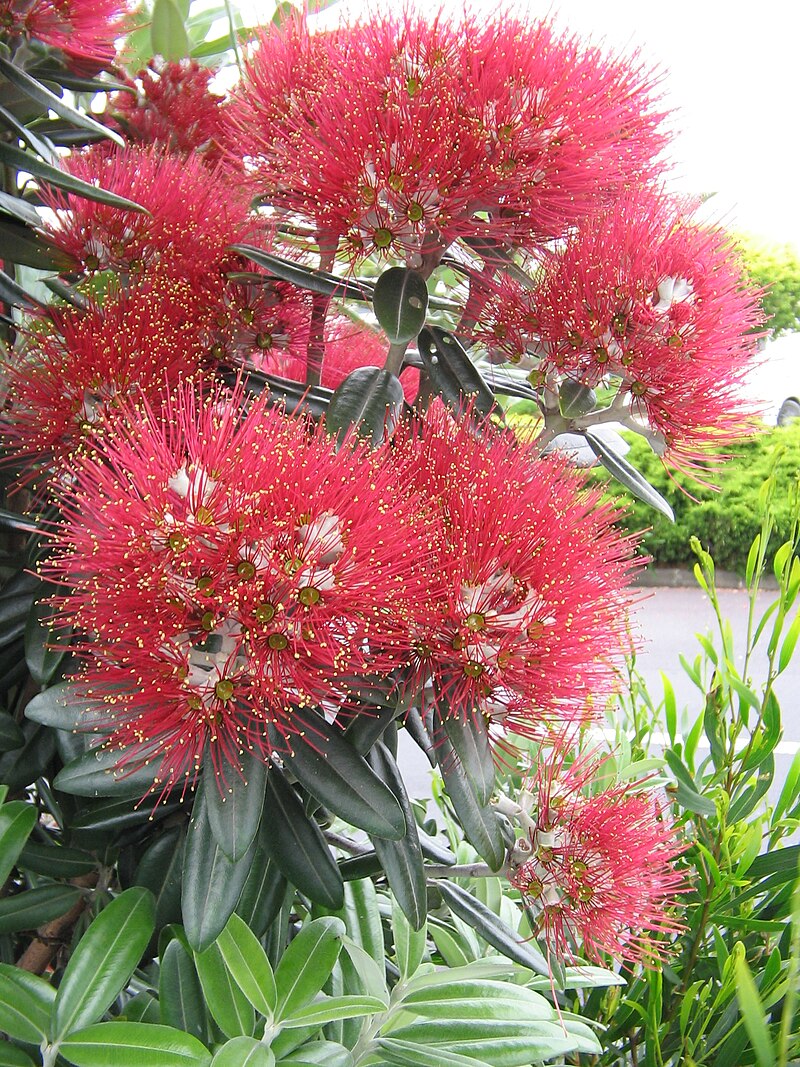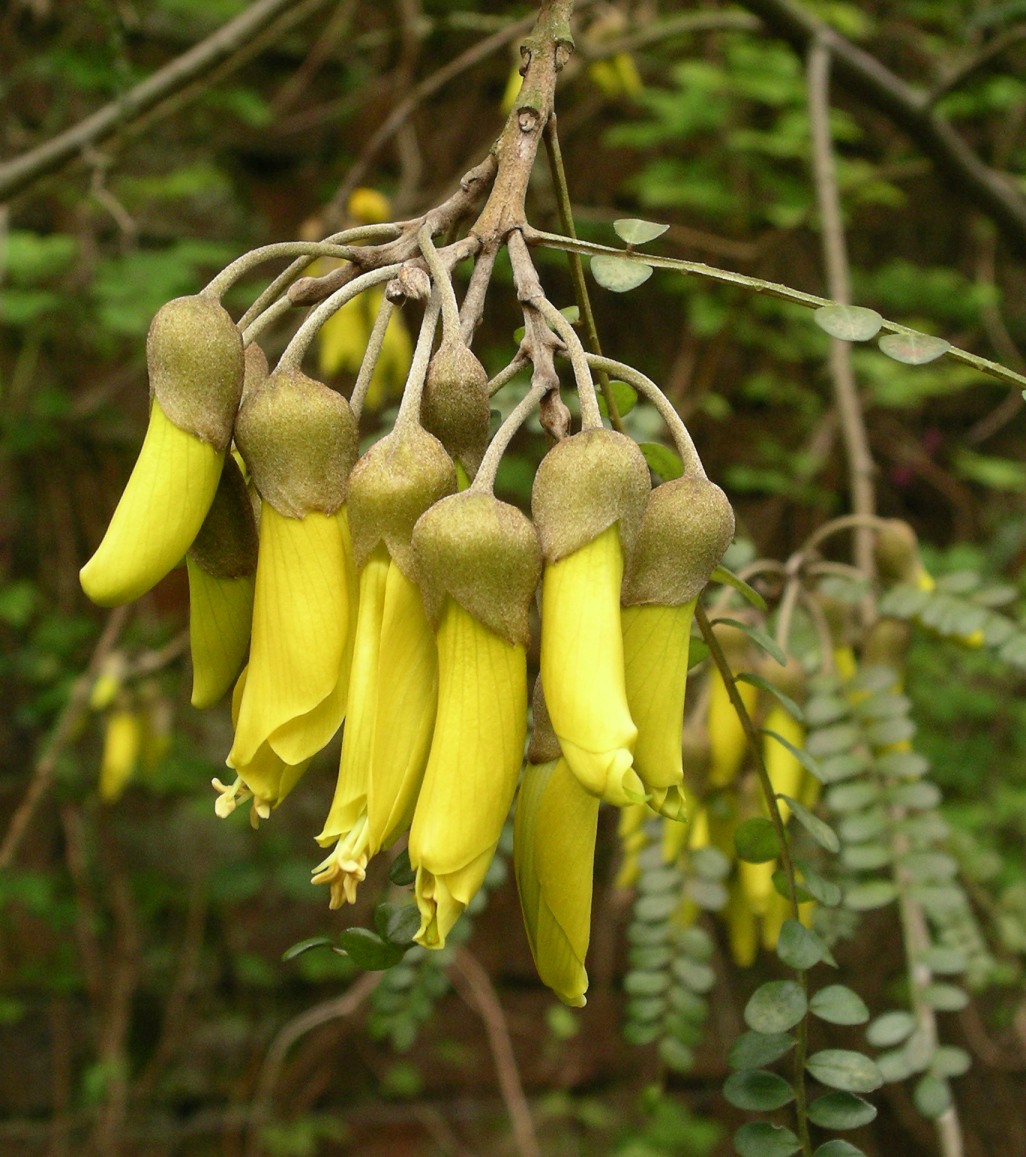Kauri (Agathis australis)
Agathis australis
The Kauri (Agathis australis) is one of New Zealand's most ancient and majestic native trees. These forest giants once dominated the northern parts of the North Island, with some specimens living for over 2,000 years and reaching heights of 50 meters with trunk diameters of several meters. Renowned for their massive, straight trunks and distinctive gum, kauri forests create unique ecosystems with specially adapted plant communities. Today, these magnificent trees face significant threats from kauri dieback disease, making their conservation a national priority.

Image credit: Majestic Kauri (Agathis australis) growing in Waipoua Forest. Image by Bernard Spragg [CC0], via Wikipedia
Quick Facts
| Height | 30-50 meters |
|---|---|
| Water Needs | Moderate |
| Light | Full sun to partial shade |
| Frost Tolerance | Low |
| Growth Rate | Extremely slow |
| Lifespan | 1,000-2,000+ years |
Climate Best Suited To
Kauri trees are naturally restricted to the northern parts of New Zealand's North Island, from Cape Reinga to about 38°S latitude (roughly north of Kawhia and Katikati). They require a warm, humid climate with adequate rainfall throughout the year.
Regional Suitability
| City | Climate Suitability |
|---|---|
| Whangārei | Ideal |
| Auckland | Ideal |
| Hamilton | Good |
| Tauranga | Good |
| Rotorua | Moderate |
| Gisborne | Challenging |
| New Plymouth | Moderate |
| Napier | Challenging |
| Whanganui | Challenging |
| Palmerston North | Challenging |
| Wellington | Challenging |
| Nelson | Challenging |
| Christchurch | Unsuitable |
| Dunedin | Unsuitable |
| Invercargill | Unsuitable |
Growing Requirements
Soil Requirements
Kauri trees have specific soil requirements for optimal growth:
- Prefers well-draining, acidic soils
- Can tolerate poor soils but grows best in deep, fertile loam
- Sensitive to soil compaction and disturbance
- Requires good soil aeration
- Cannot tolerate waterlogged conditions
Light Requirements
Young kauri trees need protection while establishing:
- Prefers full sun once established
- Young trees benefit from partial shade
- Protection from strong winds is essential
- Gradually expose to more sun as they grow
Water Requirements
Kauri trees need consistent moisture while establishing:
- Regular watering during first 2-3 years
- Moderate drought tolerance once established
- Avoid overwatering to prevent root diseases
- Mulch to retain soil moisture
- Water deeply rather than frequently
Uses & Significance
Garden Uses
- Specimen tree
- Native gardens
- Shelter belts
- Heritage plantings
- Large-scale landscaping
Cultural Significance
- Sacred to Māori (taonga species)
- Traditional timber source
- Gum used in traditional practices
- Important in creation stories
Ecological Value
- Keystone forest species
- Habitat for native birds
- Support for epiphytes
- Carbon sequestration
Seasonal Care Calendar
Spring
- Monitor for new growth
- Check for signs of kauri dieback disease
- Best time for planting young trees
- Apply mulch to retain moisture
Summer
- Water deeply during dry spells
- Monitor soil moisture levels
- Check for signs of stress or disease
- Maintain hygiene protocols
Autumn
- Clean up fallen debris
- Check drainage before winter
- Monitor for disease symptoms
- Good time for planting
Winter
- Minimal maintenance needed
- Avoid soil disturbance
- Monitor for storm damage
- Plan spring plantings
When to Prune and How Much
Kauri trees require minimal pruning but need careful attention to prevent disease spread:
- Avoid unnecessary pruning to minimize risk of disease entry
- Remove only dead, damaged, or diseased branches
- Sterilize all tools before and after use
- Seal large cuts with pruning paste
- Never prune during wet weather
Planting Guide
When to Plant
Spring and autumn are the best times to plant kauri, when soil temperatures are warm and rainfall is reliable.
Planting Steps
- Choose a well-drained site with protection from strong winds
- Prepare soil well in advance
- Dig hole twice the width of root ball
- Plant at same depth as container
- Water thoroughly and mulch well
- Install protection from wind if needed
Propagation Methods
From Seed
- Collect seeds when cones mature and open
- Sow fresh seeds immediately
- Use well-draining seed mix
- Keep warm and moist
- Germination in 2-3 weeks
Other Methods
- Difficult to propagate from cuttings
- Grafting not commonly practiced
- Seed propagation is most reliable method
Cultural History
Kauri holds immense cultural significance in New Zealand:
- Sacred tree in Māori culture
- Featured prominently in creation stories
- Historical importance in early European settlement
- Gum industry shaped early New Zealand economy
- Symbol of forest conservation movement
Pests & Diseases
Major Threats
- Kauri dieback disease (Phytophthora agathidicida)
- Root rot in poorly drained soils
- Wind damage to young trees
Prevention & Management
- Follow strict hygiene protocols
- Use clean footwear and tools
- Avoid soil disturbance around roots
- Monitor regularly for disease symptoms
Bonus Tip
When planting a young kauri, create a dedicated viewing area or bench at a good distance from the tree. This will allow future generations to appreciate its growth and majesty as it develops over the decades and centuries to come. Consider installing an information plaque detailing the planting date and expected growth milestones.


